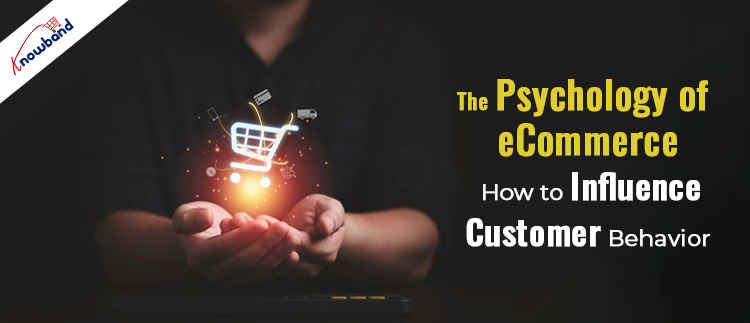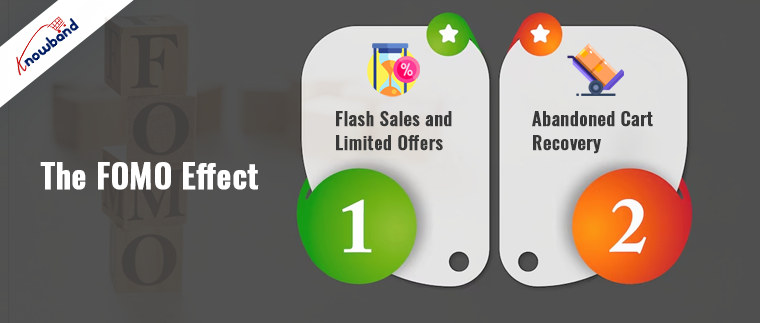In the vast world of eCommerce, understanding the psychology behind customer behavior is crucial for achieving success. With millions of online stores competing for attention, knowing how to influence and guide your customers can make all the difference. Thus, in this article, we’ll delve into the fascinating world of consumer psychology and provide actionable strategies to help you boost conversions and sales.
The Power of Perception:
Visual Appeal:
The first impression matters, and it’s often visual. Ensure your website design is clean, aesthetically pleasing, and aligned with your brand. Furthermore, the Colors, fonts, and imagery also play a significant role in shaping the perception of your brand.
Thus, always make navigation and information retrieval effortless. Customers should quickly find what they’re looking for without confusion. Simplify the purchasing process to reduce friction.
Moreover, to provide your customers with relevancy in exploring your website, you should always include a sitemap.

The Influence of Social Proof:
Reviews and Testimonials:
Positive reviews and testimonials are potent social proof. Thus, you can encourage satisfied customers to leave feedback and prominently display these on your product pages. Honest opinions from real people build trust. And guess what, people are well aware of what’s fake and what’s real.
Scarcity and Urgency:
Create a sense of urgency by showcasing limited-time offers or low stock levels. When customers feel like they might miss out, they’re more likely to make a purchase.
The Principle of Reciprocity:
As an eCommerce store admin, you should always provide valuable content, such as informative blog posts, tutorials, or free resources. Because, when customers receive something valuable without an immediate expectation of return, they are more likely to reciprocate by making a purchase.
The Role of Cognitive Biases:
Anchoring:
Use anchor prices to influence perception. Display the original price alongside a discounted price to make the discount seem more significant.
Furthermore, you can also highlight what customers might lose by not making a purchase. For instance, “Don’t miss out on this exclusive offer!” triggers loss aversion.
Personalization and the Power of Connection!
Personalized Recommendations:
Analyze customer behavior and use it to suggest products they might like. Personalization creates a sense of connection and enhances the shopping experience.
You can also share your brand’s story and values. Create an emotional connection with customers by showcasing how your products can improve their lives.
Building Trust and Reducing Risk!
Security and privacy are the two most important components of a process. The following thumb rule also applies while shopping online. Thus, as an eCommerce store owner, you can invest in robust security measures to protect customer data.
Also, a flexible return policy reduces the perceived risk of making a purchase. Make the return process hassle-free to build trust.
The Power of Incentives!
Loyalty Programs:
Reward loyal customers with exclusive discounts or early access to sales. Loyalty programs foster a feeling of belongingness while also stimulating recurring purchases. Furthermore, if you are a Prestashop or Opencart store owner, you can also check Knowband’s Prestashop Loyalty points addon to incentivize your customers with lucrative offerings and the User manual of the Prestashop Loyalty points system.
Furthermore, set a minimum purchase amount for free shipping. Customers are more likely to add items to their cart to reach that threshold.
The FOMO Effect:
Flash Sales and Limited Offers:
Announce flash sales or limited-time offers through email and social media. These create a sense of urgency and fear of missing out (FOMO).
Abandoned Cart Recovery:
Implement abandoned cart recovery emails to remind customers of the products they left behind. Offer an incentive to encourage them to complete the purchase.
Conclusion!
Understanding the psychology of eCommerce is a powerful tool for influencing customer behavior. By leveraging principles such as perception, social proof, reciprocity, cognitive biases, personalization, trust-building, incentives, and FOMO, you can create a shopping experience that resonates with your customers and drives conversions. Keep in mind that these strategies should align with your brand and values, providing genuine value to your customers and building lasting relationships.
Furthermore, you can also reach out to our support staff at support@knowband.com for more amazing eCommerce tips.




